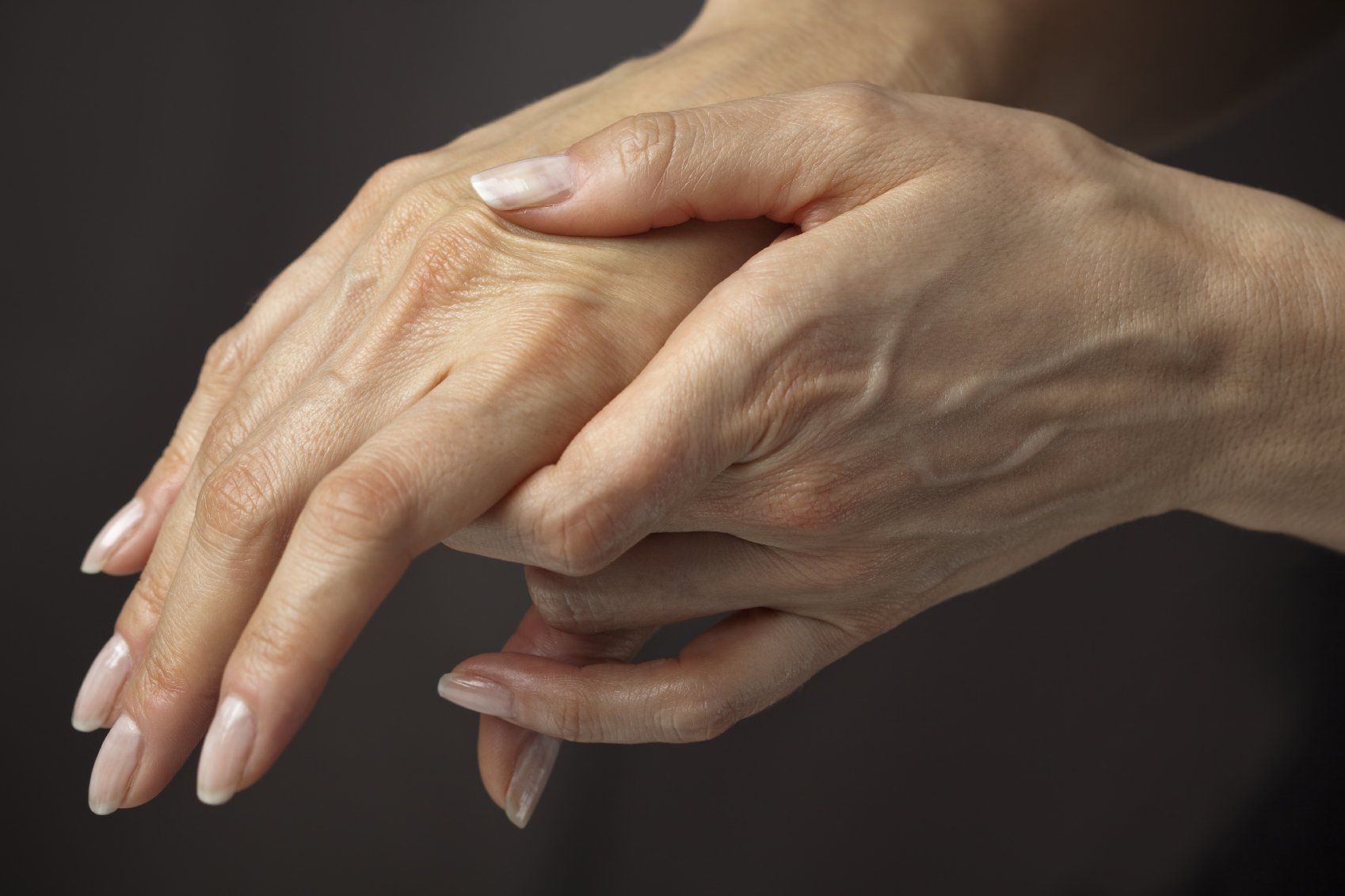Headaches and Jaw pain on the rise with COVID-19 Pandemic
Headaches and Jaw pain on the rise with COVID-19 Pandemic

Isolation, depression, anxiety and stress surrounding contracting COVID-19, finances, and burnout have been high during the COVID-19 pandemic. People avoided going to anywhere there could be a risk of contracting the virus including the dentist. When we are stressed we often subconsciously clench or grind our teeth. Dentists were seeing an increase in cracked teeth and broken fillings as a result of stress and anxiety. Massage Therapy for the face and jaw are not areas people think to request treatment for but manual therapy can help manage symptoms of dysfunction of the jaw (Temporomadibular joint dysfunction also known as TMJ dysfunction).
Clenching and grinding teeth can cause increased tone in the muscles of mastication (Temporalis, masseter, and the medial and lateral pterygoid muscles). Symptoms that can arise due to dysfunction of the jaw joint (temporomandibular joint) and muscles that Massage Therapy can help alleviate include:
- Pain and tenderness of the jaw and face
- Pain on one or both sides of the jaw
- Aching pain around the ear, face, neck and/or shoulders
- Difficulty chewing or pain while chewing
- Locking of the jaw joint
- Grinding or clenching the teeth
- Clicking or cracking when opening or closing the jaw
- Limited jaw opening
- Pain with smiling, laughing, talking, or yawning
- Tooth aches along the upper or lower molars one side or both sides
- Ringing in the ears
- Headaches
- Dry mouth
Other causes of TMJ dysfunction symptoms are bite misalignment and other dental issue including cracked teeth or fillings, cavities, or infections. These should be ruled out as they are very serious and can cause more serious health issues.
Your probably thinking "How can massage help with dry mouth, toothaches, and ringing ears?"
Tight muscles can often refer pain, this phenomenon is not uncommon and can happen anywhere in the body. Muscles because of their close proximity to other structures such as the ear and saliva gland can be pulled on or compressed and become swollen. Treatment to surrounding muscles can relieve pressure and strain on structures and alleviate symptoms.
Massage Therapy for jaw pain often focuses on a combination of intra-oral massage (inside the mouth), and external massage to the face, jaw, neck, and shoulders. Relief of jaw pain can be seen in as little as one treatment but often requires several treatment along with guided self-massage to perform at home for management of TMJ dysfunction. Acupuncture is another modality which can be used to treat symptoms externally is internal massage is too painful. Needles are inserted in and around the area of pain
Your therapist will inquire about:
- Pain level at rest and with chewing
- Frequency of pain or symptoms
- Type of symptoms
- History of head or neck injury
- History of dental surgeries and treatment
- Limitations of the neck, shoulder, and jaw
The above information will aid your therapist in identifying/developing treatment goals and monitoring for improvements of symptoms.
Your therapist will wear gloves when providing intra-oral treatment to prevent bacteria transmission into the mouth from the therapists hands and from your mouth to the therapist hands. If you have an allergy to latex please be sure to speak with your therapist before treatment so that the appropriate personal protective equipment is chosen.
If your experiencing head or jaw pain consider booking a Massage Therapy appointment.
Learn more about the function of the muscles of mastication and where they can refer pain below.
References:
- Building an Automated Orofacial Pain, Headache and Temporomandibular Disorder Diagnosis System, Nocera, Vistoso (2021) https://www.ncbi.nlm.nih.gov/pmc/articles/PMC8075456/
- Clinical, psychological, and sensory characteristics associated with headache attributed to temporomandibular disorder in people with chronic myogenous temporomandibular disorder and primary headaches, Tchivileva, Ohrbach (2021) https://www.ncbi.nlm.nih.gov/pmc/articles/PMC8141151/
- Effects of therapeutic and aerobic exercise programs in temporomandibular disorder-associated headaches, Moleririnho-Alves, Almeida (2021) https://www.ncbi.nlm.nih.gov/pmc/articles/PMC8428817/
- Role of anxiety and depression in association with migraine and myofascial pain temporomandibular disorder, Nazeri, Ghahrechahi (2018) https://www.ijdr.in/article.asp?issn=0970-9290;year=2018;volume=29;issue=5;spage=583;epage=587;aulast=Nazeri
- Association of facial massage, dry needling, and laser therapy in Temporomandibular Disorder: case report, Pessoa, Costa (2018) https://www.scielo.br/j/codas/a/CSBTZBC6RGFdBpv8rLz4Ymp/?lang=en
- The management of temporomandibular disorders: a headache in general practice, Conville, Moriarty (2019) https://www.ncbi.nlm.nih.gov/pmc/articles/PMC6774690/
- Temporomandibular Joint Disorders in the Elderly and Aging Population, Yadav, Yang (2019) https://www.ncbi.nlm.nih.gov/pmc/articles/PMC6699643/
- The Application of Manual Techniques in Masticatory Muscles Relaxation as Adjunctive Therapy in the Treatment of Temporomandibular Joint Disorders, Urbanski, Trybulec (2021) https://www.ncbi.nlm.nih.gov/pmc/articles/PMC8700844/
List of Services
-
MassetersList Item 1
The masseter muscles primary function is to close the jaw and is the strongest muscle of mastication.
The masseter can refer pain into the upper and lower teeth, into the ear, above the ear, and along the eyebrow.
Over top of the masseter is the parotid glad which secretes saliva which helps with chewing and breaking down food. When muscles in the surrounding region are dysfunctional the parotid gland can become swollen and saliva secretion can be effected.
-
TemporalisList Item 2
The temporalis muscles primary function is to assist with closing the jaw.
The masseter can refer pain into the upper teeth, and into the head above the ears.
-
Lateral PterygoidList Item 3
The lateral pterygoid muscles function is to depress and protrude the jaw, and along with the medial pterygoid slides the jaw from side to side.
The lateral pterygoid can refer pain into the cheek bone below the eye, and into the jaw joint just in front of the ear.
-
Medial PterygoidList Item 4
The medial pterygoid muscles function is to close the jaw, and along with the lateral pterygoid slides the jaw from side to side.
The medial pterygoid can refer pain along the angle of the jaw, and into the jaw joint just in front of the ear.
-
Digastrics
The digastric muscles are located under the jaw and assist with opening the mouth when the massters and temporalis are relaxed.
The digastric muscles can refer pain into the front lower teeth, and along the lower angle of the jaw.




